About Fisheries Management
Project Overview
Forests for Fish is an innovative fisheries management pilot project, modeled after the success of the Vermont and Massachusetts Foresters for the Birds program, which has been implemented across the northeast region. This project is designed to enhance stream connectivity in the Deerfield River Watershed to provide habitat for cold water fish such as native brook trout which are experiencing habitat loss at an alarming rate.
Franklin Land Trust (FLT), MWI, and Trout Unlimited (TU), supported by a variety of grants and contributions, is developing a tool kit for managing forested lands near cold water streams. This tool kit will help forest landowners, working with trained foresters and fisheries consultants, assess their forested streams for stream habitat restoration project potential.
These assessments will help determine applicable practices that will enhance cold water habitats. Examples of these practices include invasive species control, management of forest cover in the riparian zone and catchment, identifying and managing cover around groundwater seeps and upwellings within the catchment, native planting of species for bank stabilization and the placement of in-channel structures such as large woody material such as downed trees (LW). Such practices will maintain and improve conditions for fish in a time of changing climate conditions and increased stress on the landscape.
Project Goals
- Enhance in-stream habitat conditions and stream connectivity for native cold-water fish in the Deerfield River Watershed
- Provide high-quality education and riparian forest management tools for landowners and land management professionals
- Provide climate change adaptive stream management techniques to community members which increase resilience of built infrastructure
- Support economic viability of forest and stream related businesses in our region
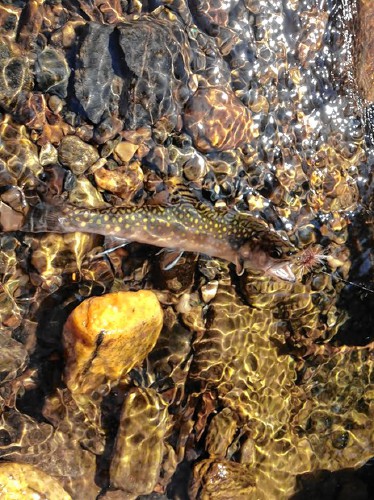
Fish and Forests
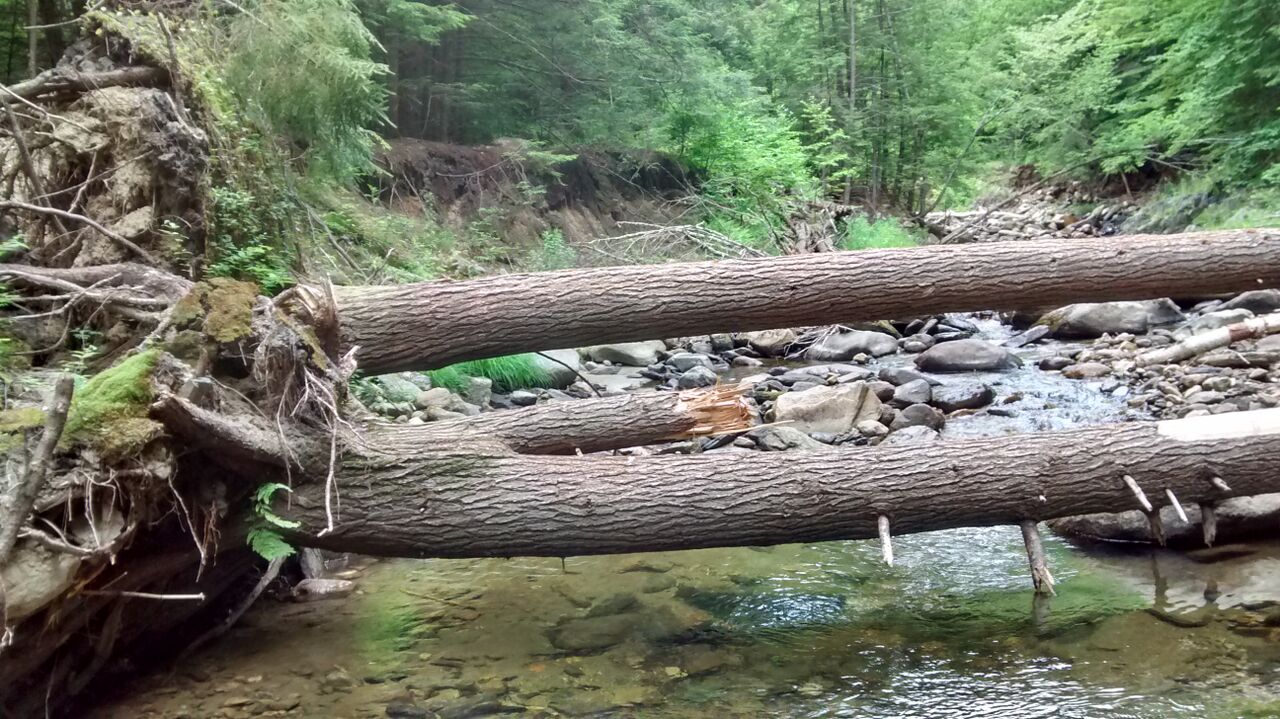
In the Deerfield River watershed of western Massachusetts, wild brook trout populations depend on small headwater streams and the forested landscape which provide these streams with shade, nutrients, and hydrological stability. Since the Deerfield Rivershed is dominated by private land ownerships, to effectively manage the small headwaters and forested catchments that support the region’s wild brook trout these private landowners must be engaged. By identifying areas where stream health and silvicultural goals align and equipping foresters and landowners with the tools needed to work at these intersections. MA Woodlands Institute and Franklin Land Trust hope to draw the attention of private landowners to a novel wildlife habitat interest, stimulate the local forest products economy, and enhance the resilience of wild trout population.
Threats to Habitat
Development of land along cold-water streams threatens healthy fish habitat with polluted run-off from roads and buildings, increased invasive plant species and warming water temperatures due to decreased shade along stream banks. Undeveloped forested lands near streams offer clean, cold and shaded water necessary for fish and other aquatic animals to survive and thrive.
Our changing climate has caused large weather events in recent years, resulting in major and devastating flooding. In response to major flooding events, some streams have been channelized and straightened to prevent damaging floods. Straightening, often done to preserve roads or property boundaries, also increases the speed of the water. The high speed and volume of flood waters can erode and deepen the stream bed, causing channelization on these incised, or narrowly deepened, streams. In channelized streams, rocks and woody material from the stream are removed in order to move floodwater quickly downstream.
Unfortunately, these straight, cleared rivers and streams with greatly eroded stream banks provide little to no habitat for fish and other aquatic species. Large trees and snags that fall naturally into rivers provide critical cover and habitat for fish, as well as the animals they feed on. Clean-up after storms removes this important habitat material. The Forests for the Fish program will encourage in-stream restoration and the installation of large woody material that will slow down water and improve fish habitat in cold water streams.
Climate Change
New England has been subject to the initial effects of climate change with more projected to come. In western Massachusetts, aside from the obvious results of Tropical Storm Irene in 2011 and an increasing series of microbursts and flash floods in 2014, regional climate models by the Northeast Regional Climate Center and the PRECIS System highlight several key climatic changes predicted to occur over the next 20-80 years. Analysis by the US Global Change Research Program determined that there is likely to be a substantial increase in extreme events in the northeast, including extended high summer temperatures and more frequent and intense storms. Extreme events are expected to compromise infrastructure and stress native ecosystems through the coming century.
Climate change projections affecting cold water streams and their inhabitants have important implications for this ecosystem. Temperature-sensitive fish like brook trout, mottled sculpin, several species of dace and darters will be forced to migrate to thermal refugia (deep stretches of stream that retain cooler temperatures) in warmer summer months, or die. Increased frequency and intensity of large storm events homogenize in-stream habitat and remove large woody material that is key habitat for fish, turtles, and several semi-aquatic mammals. Warmer winters facilitate the spread of invasive flora and fauna that threaten riparian forest buffers that shade much of the North River watershed. We plan to manage these ecologically and economically important stream and riparian areas to transition with the changing climate to protect threatened habitat.
Infrastructure
Potential economic effects of landowners implementing Forests for the Fish include:
- Providing high quality drinking water to towns and communities which rely on reservoirs
- Reducing the severity of damage to infrastructure caused by extreme weather events such as Hurricane Irene, which are increasing in frequency
- Supporting the wood product industry by engaging landowners in active harvesting and management through education about the positive benefits on wildlife
- Increasing tourism enhanced recreational opportunities provided by supporting robust native fish populations in streams, and greater awareness on the part of local populace and recreational associations such as Trout Unlimited local chapters
- Job creation through supporting the growth of new businesses such as fishing guides and tackle supply stores in the region
Demonstration Forest

Crowningshield Conservation Area, Heath, MA
Originally acquired by FLT in 2015, the Crowningshield Conservation Area in Heath is a demonstration forest for FLT and MWI. It was purchased in collaboration with TU, with a conservation restriction held by the Department of Fish and Game. Crowningshield is bisected by the upper reach of the West Branch of the North River, a sub-watershed of the Deerfield River, and contains over a mile of frontage along the West Branch of the North River. This property’s topography, past land use and frontage along a valuable wild Brook Trout fishery are typical of many properties within the headwaters of the Deerfield River. As a public access property, an important component of this project is to complete demonstrations of placement of large wood in the West Branch and do outreach with the MA Department of Conservation and Recreation to do similar work in Sanders Brooks of the North River sub-watershed in Heath, Massachusetts.
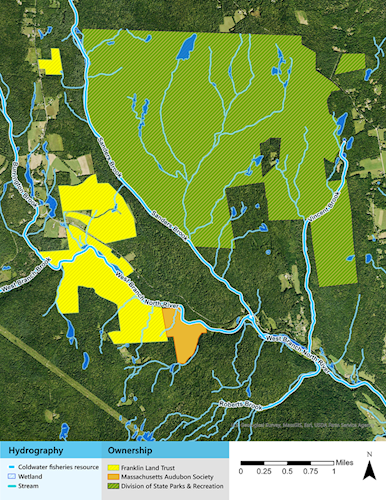
Large woody material placements have the potential to heavily impact channelized rivers common in the New England region, and private landowners have great potential to improve watershed health with the appropriate management tools and assistance. In-stream wood can slow the flow of water in the stream, allowing the buildup of sediment to replenish eroded channels. The built-up channels alleviate bank failure, and together, these improvements can reduce the erosive power of damaged streams. Well-placed wood barriers can improve habitat diversity by recruiting pebbles and organic material that provide food and habitat for aquatic arthropods, and the cold-water fish that prey on them. As main areas of rivers waters have longer periods of warming due to climate change, refugia in cool headwater steams have become more important.
In-stream Work at Crowningshield 2017-2025
Crowningshield has lent itself well to demonstrations of assessment and practices developed within the Forests for the Fish toolkit. In September 2017, FLT, MWI and TU partnered to place wood in the West Branch of the North River on Crowningshield. This stream was lacking large woody material, such as downed trees and branches. Planning and permit work were done during Spring and Summer of 2017. Observations of the stream channel and surrounding area were done by Cole Ecological working with TU and FLT, and fish population surveys were done in the West Branch of the North River to capture baseline conditions at the sites. Trees were felled or moved with root balls intact and placed in the stream channels.
Unfortunately, our instream structure was destroyed by the aftermath of a storm that deposited 7-9in of rain two weeks after completion. This disturbance naturally recruited two trees, which broke through our placed woody debris and formed a log jam downstream. The structural failure was caused by a variety of external issues including the size of the wood placement relative to the size of the stream. This showed us the importance of risk assessment (we owned a substantial section of frontage on the West Branch, and our structure was more than 2 miles to the nearest infrastructure, a culvert on West Branch Rd.) and the importance of a comprehensive system plan. A plan requested from Environmental students at Smith College proposed 12 individual large wood structures, due to the size of the stream and the potential for future flooding. Installing a single structure proved risky, all of the power of the system is brought to bear on the one wood placement. Whereas, multiple, well placed, structures dissipate that power, so that any one structure is not vulnerable. High-gradient streams require an equally large budget and can be at risk of failure due to the power of flows in large rain events. Currently the cost and permitting of such a project is not within MWI and FLT’s reach, but working within smaller order streams is possible, shown by the work done on Sanders Brook’s tributary. This has oriented our outreach and Forest for the Fish to landowners that are looking to do work within first and second order streams.
However, our work at Crowningshield was successful in protecting an eroded bank. The log jam, while not in the intended place, provides similar functions as the in-stream wood placement would have. The structural bank improvements remain active as of 2025.
Crowningshield Conservation Area - West Branch of the North River (3rd order stream)
In-stream wood: tree stems and stems with root-balls, bank stabilization, habitat and cover, flood plain connection
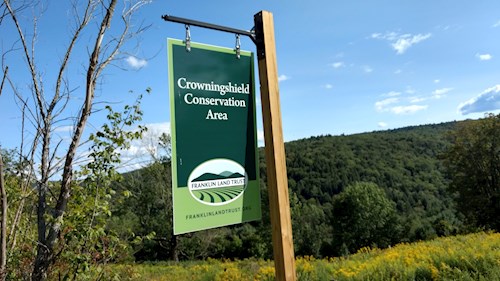
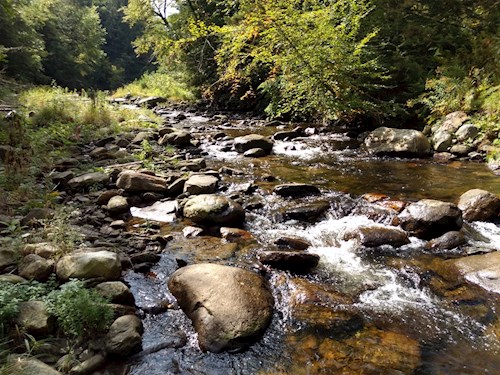
West Branch of the North River
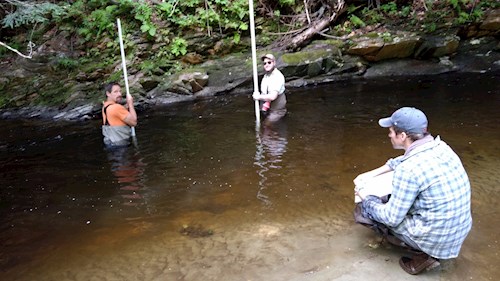
Baseline observations of the river
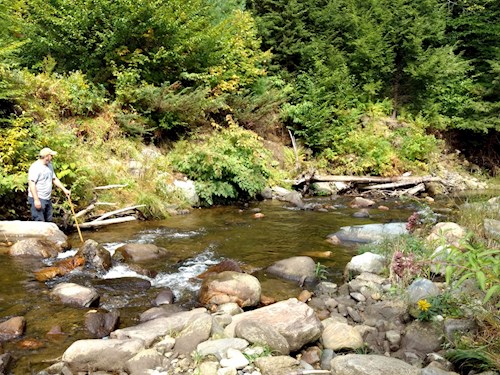
Site 1 - before work is done
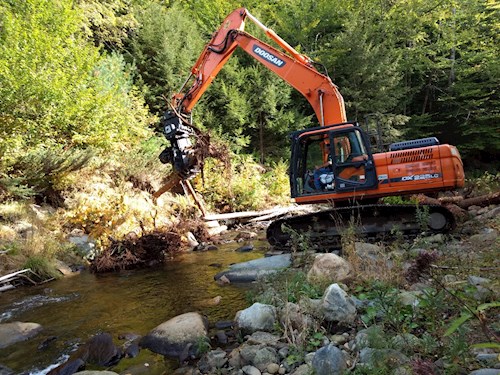
Site 1 - in progress
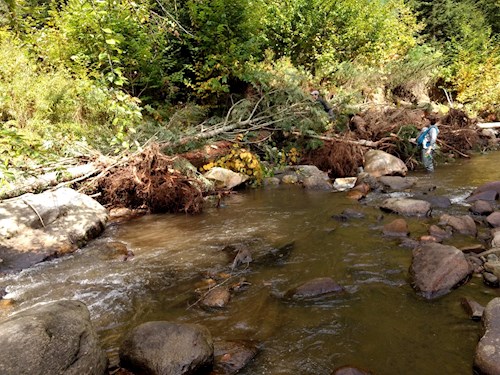
Site 1 - after work was complete
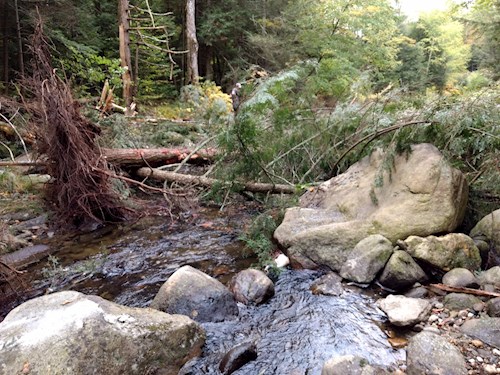
Site 2 - work completed
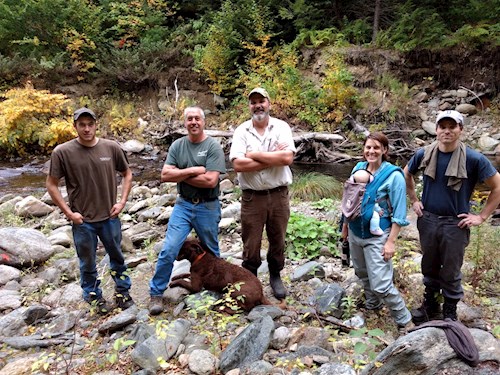
Past and Future Goals
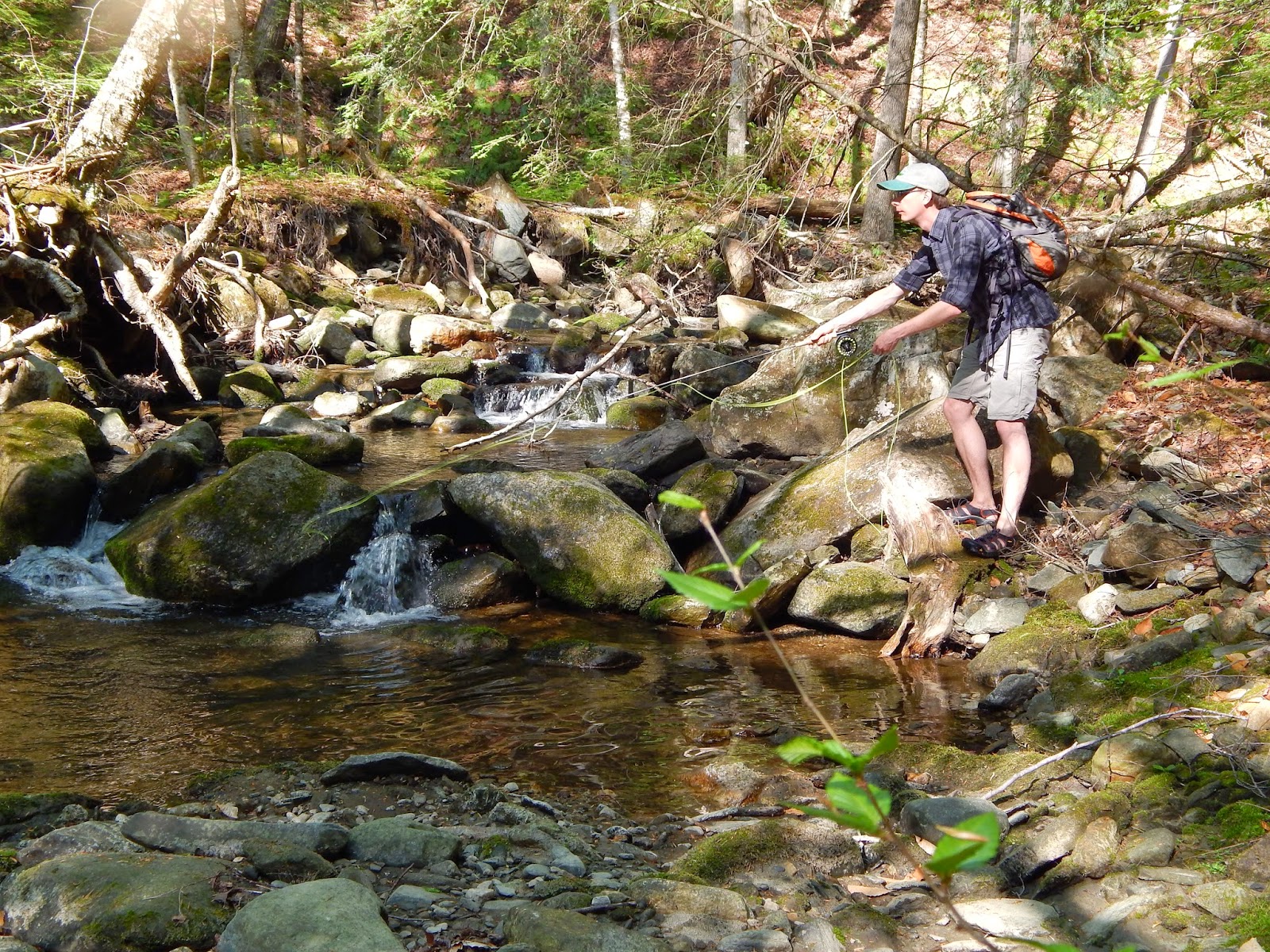
The Massachusetts Woodlands Institute, along with our parent organization Franklin Land Trust, have long been committed to conservation of local woodlands and reclaimed farmland. While we have been active in the learning and practicing of fisheries management through foresting as early as 2015, our partnership with Trout Unlimited has taught us a lot about the value of surrounding forests on our cold-water steams, and the animals that rely on them. MWI’s pilot initiative launched under “Forests for Fish” in collaboration with TU in 2020, aims to raise awareness about the importance of these waterways in conservation and the benefits of their restoration.
In 2015, MWI truly started our efforts in fisheries management with the Franklin Land’s Trust’s acquisition of the 82-acre Crowningshield and 14-acre Desmond properties in Heath. Formerly abandoned farmland, the Crowning shield property was the home to a large section of headwater stream flowing into the Deerfield River, and FLT was able to place a conservation restriction and get a habitat restoration grant to restore the properties. During a pre-purchase assessment, Stewardship Manager Will Anderson and former FLT biologist Josh Morse discovered valuable trout habitat in the West Branch North River. Through this, they were able to use their connections to Trout Unlimited to earn a grant to buy the property and potentially conserve an entire watershed.
By 2016, MWI had solidified a partnership with Trout Unlimited and started planning projects and submitting grants. The national chapter of TU mapped the river reaches of Crowningshield and the state-owned H.O. Cook Forest in Heath, and after a site visit by Field Geology services, the stewardship plan for the Crowningshield property was completed, and the time had come to select a site for in-stream wood.
During the summer of 2017, contractors for the in-stream wood addition were hired, and the permitting and plans for the projects were finalized. In-stream work began in June, with a Fall assessment done by Cole Ecological Services and the North River restoration grant, as well as state regulators. Contractors completed the in-stream work in September, with an October follow-up. The post-project reporting was completed by year’s end. A one-year follow-up discovered that though most of the wood had washed away, the bank stabilization work remained, and a natural log jam formed downstream.
In 2020, FLT acquired the Gudell parcel abutting Crowningshield property with the support and assistance of Trout Unlimited. The 145-acre parcel contains the opposite side of the West Branch Brook, a crucial cold-water fishery. Located near both an Audubon Society conservation area and a state forest, these parcels represent two miles of river frontage and three tributaries flowing into the Deerfield River.
In 2021, FLT placed a conservation restriction on the Obear property in Whately, MA. The Obear property is home to Ground Brook, a tributary of the Mill River via West Brook. Because of the five-foot waterfall between Ground and West Brook, a genetically distinct population of brook trout has developed, separated from the general brook trout population for an estimated 900 years. These Ground Brook trout mature more slowly, have a higher juvenile survival, and live a shorter lifespan than trout in the wider Deerfield watershed. Because of the reduced genetic diversity caused by their limited gene pool, the trout are susceptible to environmental threats such as climate change. These trout are being studied by the USGS Conte Fish Research Laboratory. A conservation restriction permanently preserved this land and this population.
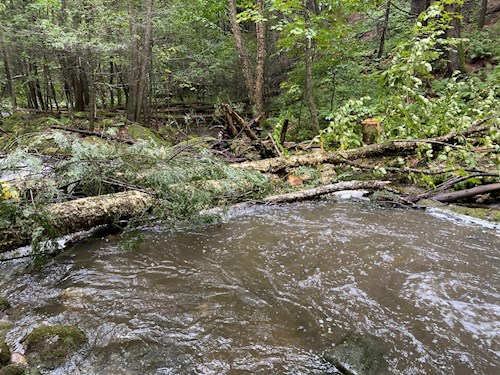
Fig 1: Rice Brook, 2021. Placement of in-stream wood by TU following grants by the Wildlife Conservation Society and MA Department of Environmental Protection.
In 2022 and 2023, the Land Trust acquired and conserved two more important properties in the Deerfield watershed. The 60-acre Clark property, with unnamed cold-water resource stream that flows into Poland Brook, received a restriction. Additionally, an anonymous grant allowed FLT to purchase the Edge Hill conservation area. Formerly a golf course, Edge Hill is home to an unnamed tributary of the Bear River, which flows into the Deerfield. Eighty acres of property were acquired, containing tributaries that flow into the cold-water Bear River. Though some of the area will be kept as fields for bird habitat, management will be undertaken to protect this critical cold water stream habitat.
In 2024, we were able to host an event in Tissdell Brook where volunteers from TU and MWI placed woody material in the stream. In-stream wood contributes to the slowing of flow in waterways and provide food and habitat for benthic macroinvertebrates and fish. Slower water can make riffles and pools that allow slow water obligate species to build their homes.
In 2025, we hope to see the release and distribution of the three FFF booklets, “The Streamer’s Dozen", “A Riparian Assessment and Management Guide” and “The Big Picture.” These management documents will provide a guide for landowners and management teams on conservation of our forested stream habitats, as well as a set of target species and their habitat requirements.
More Reading:
The Warner Hill Landscape Partnership - Franklin Land Trust
Eastern Brook Trout Joint Venture Press Release - Franklin Land Trust
Something Fishy Is Going On Here - Franklin Land Trust
A Hat Trick for Conservation - Franklin Land Trust
FLT Completes Acquisition of Edge Hill Golf Course - Franklin Land Trust
Coming Soon!:
The Streamer’s Dozen
A Riparian Assessment and Management Guide
The Big Picture
Partners
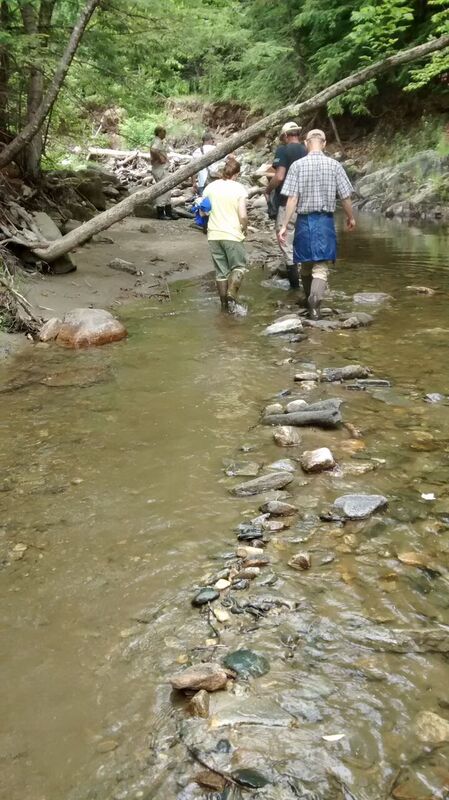
Massachusetts-Rhode Island Council of Trout Unlimited
Windham County Regional Commission
Franklin County Regional Council of Governments
Deefield River Watershed Association
Connecticut River Watershed Council
MA Department of Fish and Game
MA Department of Conservation and Recreation
MA Department of Environmental Protection
VT Department of Environmental Conservation
Eastern Brook Trout Joint Venture
US Forest Service Green Mountain and Finger Lakes National Forests
USDA Natural Resources Conservation Services
USGS Cooperative Fish and Wildlife Research Unit - Massachusetts
Collaborative Working Groups:
Crowningshield Conservation Area Advisory Committee
Deerfield River Watershed Collaborative Group
More Information
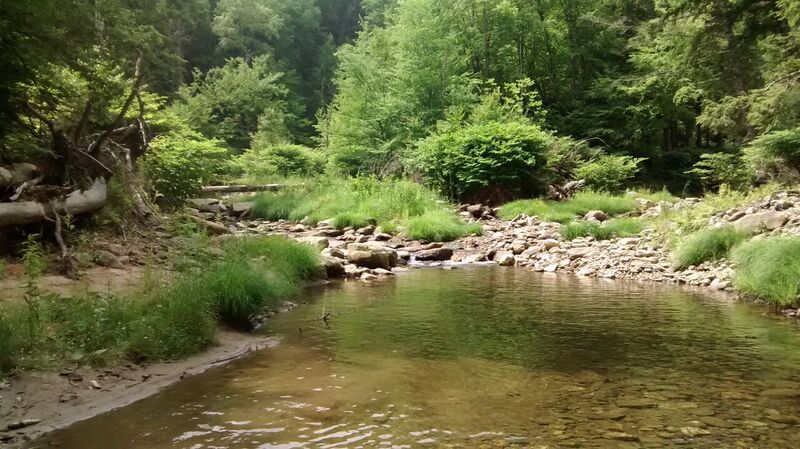
Crowningshield Conservation Area, Heath, MA
Franklin Land Trust, "Fly Fishing on Franklin Land Trust's recently conserved property"
http://www.franklinlandtrust.org/news/fishing
A Hat Trick for Conservation
http://www.franklinlandtrust.org/news/a-hat-trick-for-conservation
Small Stream Reflections blog: Franklin Land Trust's "wild brook trout forest"
http://smallstreamreflections.blogspot.com/2015/05/a-franklin-land-trust-wild-brook-trout.html
Trout Unlimited: Adapting the Riparian Areas and Water of the North River. Climate Change Response Framework, Demonstrations.
Generous Bequest Boosts TUs Land Conservancy Fund
https://www.tu.org/magazine/conservation/generous-bequest-boosts-tus-land-conservancy-fund/
Aquisition of Crowningsheild property for Conservation
Massachusetts Brook Trout Conservation Area Growing - Trout Unlimited
Forest Fisheries Management
Trout Unlimited blog “PBS Show Highlights TU’s Stream Work in Vermont” (Outdoor Journal – Chop and Drop)
http://www.tu.org/blog-posts/pbs-show-highlights-tus-stream-work-in-vermont
Brook Trout Habitat in New Hampshire "Water in the Woods", Presentation by John Magee, NH Fish and Game Department
https://extension.unh.edu/resources/files/Resource003503_Rep5006.pdf
Restoring Brook Trout Habitat in Headwater Streams Using Large Woody Debris, Dan McKinley, Fisheries Biologist, Green Mountain National Forest Roger Monthey and Dave Welsch, U.S. Forest Service, Northeastern Area State and Private Forestry
https://www.na.fs.fed.us/stewardship/pubs/misc/restoring_brook_trout_habitat.pdf
Maine Forest Service, "Opportunities for Cold Water Fisheries Enhancement Associated with Forestry Operations in Maine"
http://www.maine.gov/tools/whatsnew/attach.php?id=608110&an=1
Maine Forest Service Rule Chapter 25, "Standards for Placing Wood into Stream Channels to Enhance Cold Water Stream Fisheries Habitat"
http://www.maine.gov/dacf/mfs/publications/rules_and_regs/chap_25_rules.pdf
Washington State Aquatic Habitat Guidelines Program, Stream Habitat Restoration guidelines 2012
http://wdfw.wa.gov/publications/01374/wdfw01374.pdf
White Branch White River Restoration, Green Mountains and Fingerlakes National Forests, US Forest Service, Vermont
https://www.fs.usda.gov/detail/gmfl/home/?cid=FSEPRD561654
Forests and Fish, Washington Forest Protection Association
https://www.forestsandfish.com/
Programs
Trout Unlimited's Land Conservancy Fund
Massachusetts Fish Conservation Program
http://www.mass.gov/eea/agencies/dfg/dfw/wildlife-habitat-conservation/fish-conservation.html
Massachusetts Stream Continuity Program
New Hampshire’s Fish Habitat Program
http://www.wildlife.state.nh.us/fishing/fm-habitat.html
White River Partnership Trees for Streams Program
http://whiteriverpartnership.org/trees-for-streams/
White River Partnership River Corridor Protection
http://whiteriverpartnership.com/river-corridor-protection/
Saxton River Watershed Collaborative
https://saxtonsriverwatershed.wordpress.com/
http://www.windhamregional.org/news/saxtons-river-watershed-collaborative
Eastern Brook Trout Joint Venture Report: Conservation Strategy
http://easternbrooktrout.org/reports/ebtjv-conservation-strategy/view
Eastern Brook Trout Joint Venture: Riparian Restoration Decision Support Tool
Demonstration Projects:
Large Wood Improves Habitat on West Branch, White River, Vermont
http://whiteriverpartnership.org/west-branch-large-wood-project/
Nash Stream, New Hampshire
https://www.sciencebase.gov/catalog/item/578a9a37e4b0c1aacab89738
Eastern Brook Trout Joint Venture Report: East Fork Greenbrier River/Poca Run Large Woody Material Project, Monongahela National Forest, West Virginia, Monitoring Report - 2015
Slowing the Flow, Article by New England Forestry Foundation on work by Trout Unlimited and New on Griffon Brook in Deerfield, New Hampshire.
http://newenglandforestry.org/2017/06/26/chop-drop-and-load/
Maps and Resources
Trout Unlimited, "My Healthy Stream"
http://www.tu.org/sites/default/files/My%20Healthy%20Stream.pdf
USGS SHEDS: Interactive Cachement Explorer (ICE) | Deerfield River Watershed
http://ice.ecosheds.org/deerfield/
MA Department of Fish and Game, Coldwater Fish Resources
MA Department of Fish and Game, "Brook Trout in Massachusetts"
http://www.mass.gov/eea/agencies/dfg/dfw/fish-wildlife-plants/fish/trout-information.html
MA Executive Office of Energy and Environmental Affaris, "Drought Management"
http://www.mass.gov/eea/agencies/dcr/water-res-protection/water-data-tracking/drought-status.html
NOAA National Centers for Environmental Information, "State of the Climate Reports"
https://www.ncdc.noaa.gov/sotc/
USFS Northern Institute of Applied Climate Science, Climate Change Response Framework: New England
http://www.forestadaptation.org/new-england
National Wildlife Federation, "Wildlife in Hot Water: America's Waterways and Climate Change."
Research
Vermont Fish and Wildlife Department “Impacts to Stream Habitat and Wild Trout Populations in Vermont Following Tropical Storm Irene”
http://www.vtfishandwildlife.com/common/pages/DisplayFile.aspx?itemId=111204
“Flood Impacts to Wild Trout Populations in Vermont"
http://www.vtfishandwildlife.com/common/pages/DisplayFile.aspx?itemId=111200
North American Journal of Fisheries Management, Jud F. Kratzer and Dana R. Warren, 2013. “Factors Limiting Brook Trout Biomass in Northeastern Vermont Streams.”
Vermont Fish and Wildlife Department, Kenneth M. Cox, 2010. "Assessment of Trout Cover and Its Relationship to Trout Abundance in the Batten Kill Main Stem and Four Rivers in Reference Watersheds.”
http://www.vtfishandwildlife.com/common/pages/DisplayFile.aspx?itemId=111230
"Fluvial Geomorphology and Culvert Assessment of the Meduxnekeag River Aroostook County, Maine" John Field, Field Geology Services. Prepared for Houlton Band of Maliseet Indians Littleton, Maine.
http://www.maliseets.com/nr_reports/Meduxnekeag%20Report.pdf
Earth Surface Processes and Landforms, Ellen Wohl* and Daniel N. Scott, 2016. “Wood and sediment storage and dynamics in river corridors.” doi: 10.1002/esp.3909.

